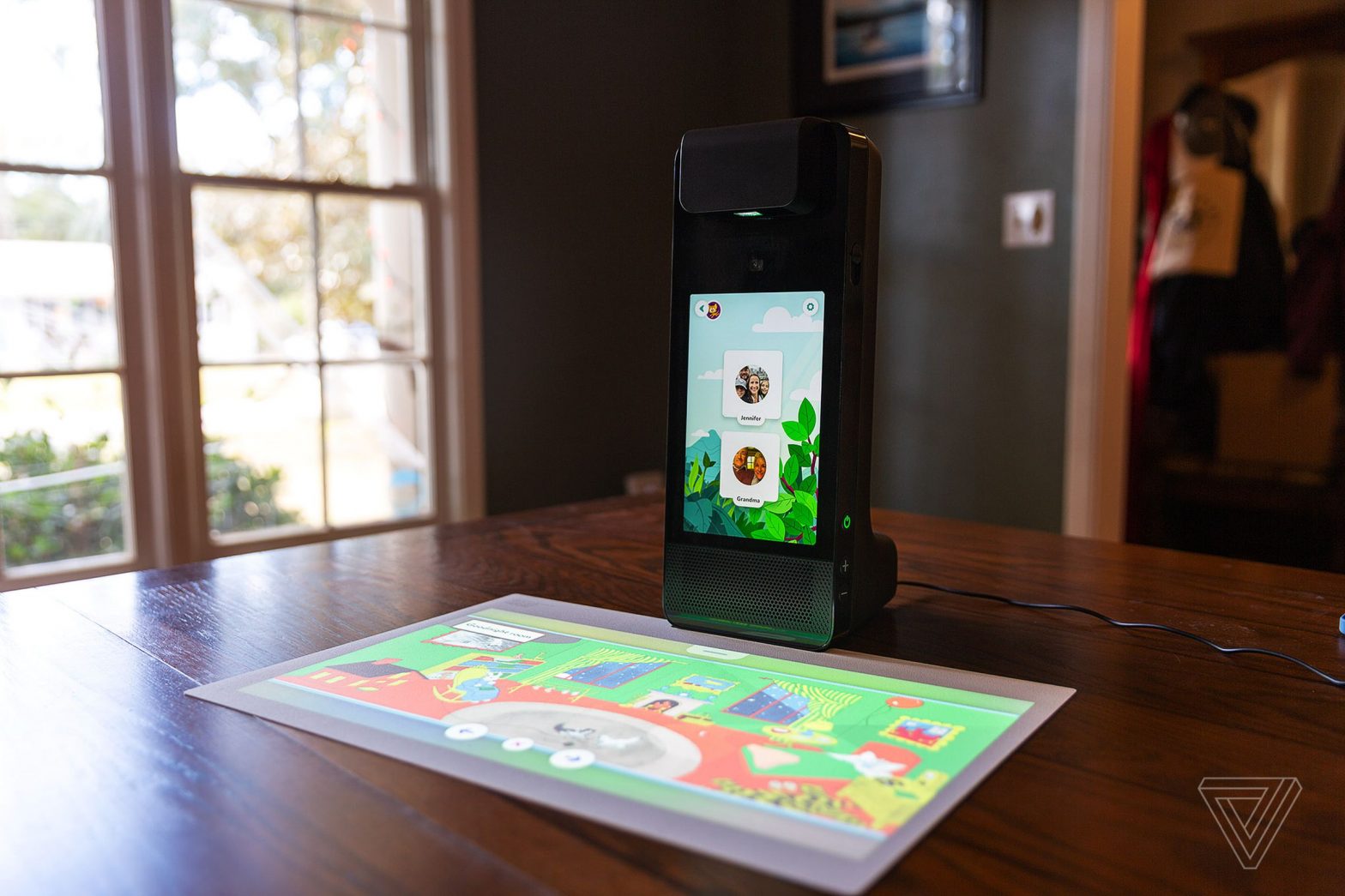/
How a retractable smart display, Map View, and robot vacuums could pull together Amazon’s ambient smart home vision.
Share this story
If you buy something from a Verge link, Vox Media may earn a commission. See our ethics statement.
:format(webp)/cdn.vox-cdn.com/uploads/chorus_asset/file/22977075/jtuohy_211027_4856_0007.jpg)
Amazon’s first projector project, the Amazon Glow, folded in failure last year.
Photo by Jennifer Pattison Tuohy / The Verge
Amazon is reportedly working on a projector that would turn any surface in your home into a screen, as reported by Reuters. People familiar with the matter told the news organization that the projector is designed to do things like beam a recipe on the wall above a stove and make Zoom calls that track you as you move around the house.
A touch interactive projected screen is an obvious move for the ambient smart home that Amazon has long proposed, one where the tech appears when you need it and disappears when you don’t. I mean, that’s literally the definition of a projector.
When I reviewed Amazon’s first attempt at a smart projector, the now-discontinued Amazon Glow, I said that it would have made more sense as a smart home control device than a kid’s toy.
A small, voice-activated projection device tucked up under a kitchen cabinet that could project on your kitchen counter or wall when you need a recipe or to see the feed from your video doorbell could easily be the next evolution of Amazon’s smart home efforts.
That device was an interactive projector where you could touch and move “objects” around on the “screen,” which could be any available flat surface.
The potential here for more applications around the home is quite exciting, as others have shown. Appliance manufacturer Bosch showed off a kitchen projector at CES 2019 that used its MEMS-based projection tech with similar functions to Amazon’s rumored device. I saw a demo of it showing you how to cut a cake precisely, but there are many more potential use cases, especially in a kitchen or bathroom with plenty of counter space.
:format(webp)/cdn.vox-cdn.com/uploads/chorus_asset/file/24941512/pai_ces19_res_1280x720.jpeg)
Bosch demoed a smart home projector four years ago that never arrived.
Image: Bosch
Amazon acquired a lot of tech and know-how to build a smart home projector device when it took over projection tech startup Lightform in late 2021. That company developed an expensive mapping projector that, unfortunately, was prone to catching fire.
Lightform’s CEO Brett Jones is now head of product at Amazon Devices, as reported by Janko Roettgers, and has recently advertised for team members with “experience designing 3D spatial interactions.”
The combination of mapping capabilities and a touchscreen projector opens up even more intriguing possibilities. A screen that could appear in front of you when you need to interact with it, wherever you are in your house, would be really useful. It could also cut down on the need for multiple interfaces in a smart home.
We know Amazon is working on mapping your home. It just announced a new Map View UI for smart home control in its Alexa app (which is coming to its Echo Hub smart home controller next year).
When I spoke to Dave Limp, SVP of devices and services, ahead of Amazon’s event last week, he mentioned they had worked on developing a device to measure the inside of your home for Map View. In the end, he said, they opted to use the existing lidar mapping capability on iPhone Pro models (12 and newer).
“We had an alternative way of building a floor plan,” he told me. “But it turned out that it was just too cumbersome for customers … trying to draw and build lines in.” He said they also experimented with something in the Ring app but determined it was “Much easier to walk into a room, pan your phone around, have it build the walls, and then stitch it all together.”
The obvious move here would be to use the maps iRobot’s Roombas build of your home, which could be why Amazon purchased the robot vacuum company. As I wrote when the announcement was made:
From a smart home perspective, it seems clear Amazon wants iRobot for the maps it generates to give it that deep understanding of our homes.
However, that sale has stalled due to regulatory scrutiny. It’s possible the iPhone move was a last-minute pivot. When I asked Limp about using maps from Roomba, he sidestepped, saying maps from Astro — its home robot with mapping capabilities — would one day converge with the new Alexa Map View.
In its continued quest to make Alexa as profitable as its other service-driven revenue streams (Kindle, Fire TV, etc.), a new piece of high-tech hardware to sell at close to cost is an odd play. However, since day one, the “stick an Alexa-enabled gadget in every corner of customers’ homes” has been the company’s approach, and based on this week’s hardware event, that doesn’t seem to be changing. A voice-enabled projector would certainly open up more corners — albeit flat ones!
